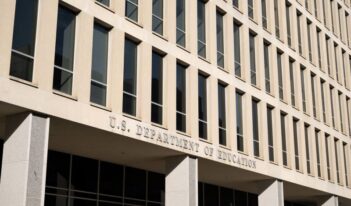
Senate-sponsored task force urges streamlined approach to the regulation of higher education.
A Senate report issued earlier this year calls on the U.S. Department of Education to scale back regulatory oversight of colleges and universities receiving federal funds.
The federal government spends over $75 billion annually on higher education programs. Although institutions of higher education benefit immensely from federal support, regulations designed to oversee the use of taxpayer funds and advance broader policy goals can impose significant compliance costs on recipient colleges and universities.
The Task Force on Federal Regulation of Higher Education, comprised of 16 Senate-appointed higher education leaders, issued the report earlier this year in anticipation of the upcoming reauthorization of the Higher Education Act. The task force is charged with providing recommendations to improve the way educational institutions are regulated. The report highlights a number of common regulatory challenges faced by colleges and universities, and offers ideas to reduce costly and confusing regulations.
The report focuses on the impact of oversight regulations on both institutions of higher education and the students they serve. Although the task force acknowledges that “government oversight provides essential protections for students and taxpayers,” it concludes that compliance with unnecessary and overly complex federal regulations contributes to rising tuition costs and consumes millions of dollars that could otherwise be spent on education and research.
According to the report, the most serious challenge faced by colleges and universities is the administrative cost of complying with an ever-changing and sometimes confusing regulatory scheme. Higher education institutions, it explains, “are subject to a massive amount of federal statutory, regulatory, and sub-regulatory requirements, stemming from virtually every federal agency and totaling thousands of pages.” A recent study by the American Action Forum, for example, estimated that institutions spend 85 million hours each year on paperwork for the Education Department. Another study from Vanderbilt University found that nearly $150 million, or 11 percent, of the school’s total expenditures in 2014 were devoted solely to complying with federal regulations.
The difficulties faced by educational institutions in complying with federal regulations are only compounded by the Education Department’s “inability or unwillingness to act expeditiously,” suggests the task force. The Department “often fails to provide rules and guidance in a timely fashion,” even when required to do so by law. For instance, even though the Higher Education Opportunity Act requires the Education Department to provide institutions with an annual timeline to help facilitate institutional compliance with the Act, it has yet to do so for any of the seven years since its enactment.
Similarly, the task force notes that it “often takes years to resolve enforcement proceedings.” It took seventeen years, for example, before the Education Department required Yale University to repay financial aid funds identified for reclamation in a 1996 audit. In an unrelated incident, the Department reportedly investigated Yale in 2004 for inadequate reporting of campus crime statistics from 2001 and 2002, but failed to levy a fine until 2013.
So what can Congress do to make regulation of higher education more efficient and effective? The task force identifies certain problematic regulations and recommends changes in the development, implementation, and enforcement of regulations.
To start, the task force suggests that Congress require the U.S. Government Accountability Office to review the Education Department’s processes for estimating the burdens and costs of regulatory compliance. According to the task force, the Department’s existing methodology is “totally opaque” and “consistently and substantially underestimates the costs and burdens of its rules.” The task force also recommends measures to facilitate stakeholder engagement in the rulemaking process, and to ensure that the Department is limited to regulating matters directly related to education, student safety, and the use of federal funds.
In addition, the task force urges Congress to require the Education Department to publish a “compliance calendar” to provide institutions with a “clear checklist” of regulatory obligations and deadlines. The calendar should be updated every year and made readily available to educational institutions. The task force argues that compliance is more efficient and the need for enforcement actions less frequent when institutions understand the rules that govern them.
Finally, to improve the enforcement of regulations, the task force recommends that the Education Department “act in a timely manner when conducting program reviews, investigating and resolving complaints, and approving new programs.” Although institutions of higher education are subject to strict deadlines when responding to the Department’s requests, colleges and universities complain that its compliance and enforcement proceedings are chronically open-ended affairs.
Ultimately, the task force hopes that Congress will be “smarter” about how it regulates higher education. “Institutions of higher education must be careful stewards of federal funds,” it concludes. “But unnecessary and complex regulations provide no benefits.”
The task force was created by Senators Lamar Alexander (R-TN), Barbra Mikulski (D-MD), Richard Burr (R-NC), and Michael Bennet (D-CO) in 2013 and its work was supported by the American Council on Education. Its members were drawn from colleges and universities throughout the country and it was co-chaired by Chancellors William E. Kirwan of the University System of Maryland and Nicholas S. Zeppos of Vanderbilt University.



